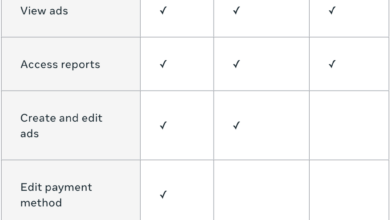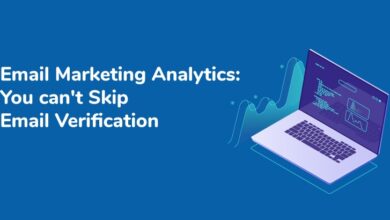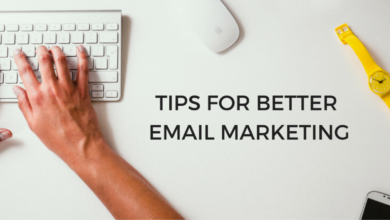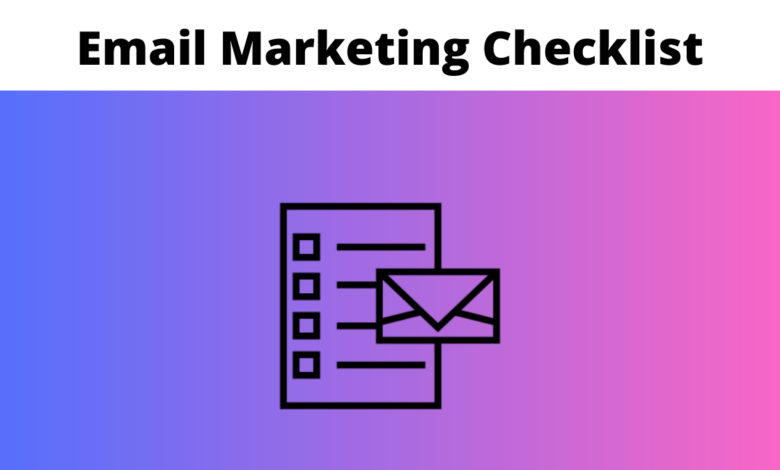
Email List Marketing Explained A Complete Guide
Email list marketing explained is crucial for modern businesses. It’s not just about sending out emails; it’s about building relationships, nurturing leads, and driving conversions. This guide delves into the intricacies of email marketing, covering everything from creating effective email lists to crafting compelling content and maximizing automation. We’ll explore the fundamental principles, the different types of email lists, and the various strategies for maximizing your ROI.
Learn how to build a thriving email marketing strategy, from setting up opt-in forms to analyzing campaign performance.
We’ll dissect the core components of a successful email marketing strategy, comparing various platforms, and outlining the steps for building and maintaining a healthy subscriber list. Understanding the ethical and legal considerations, such as complying with the CAN-SPAM Act, is also paramount. We’ll then delve into crafting engaging email content, using automation for efficient campaigns, and finally, how to effectively measure and analyze the performance of your efforts.
Introduction to Email List Marketing
Email list marketing is a powerful digital strategy for businesses to connect with their audience and drive sales. It involves cultivating a list of subscribers who have opted in to receive emails from a company. These emails can promote products, share valuable content, nurture leads, and ultimately convert prospects into loyal customers. Effective email marketing relies on understanding and engaging the audience, rather than just blasting out promotional messages.Email marketing is no longer a simple blast-and-forget tactic.
It requires a thoughtful strategy built around understanding your target audience and providing them with valuable content that resonates with their needs and interests. This includes segmenting your list to tailor messages and optimizing for deliverability to avoid ending up in spam folders. This approach fosters a relationship with subscribers, driving engagement and increasing conversions.
Definition of Email List Marketing
Email list marketing is the practice of building and managing an email list of subscribers who have opted-in to receive marketing communications from a company. This list is then used to send targeted emails, which may include promotional offers, valuable content, or newsletters, with the goal of fostering relationships and driving conversions.
Fundamental Principles of Effective Email Marketing Campaigns
Effective email marketing campaigns hinge on several key principles. Firstly, permission-based marketing is crucial; only send emails to those who have explicitly opted-in. Secondly, personalization is vital; tailoring emails to individual subscriber preferences and behaviors significantly increases engagement. Thirdly, delivering valuable content, rather than just promotional material, cultivates trust and establishes your company as a valuable resource. Finally, measuring and analyzing campaign performance is critical; tracking key metrics like open rates, click-through rates, and conversion rates helps refine strategies for optimal results.
Types of Email Lists and Their Uses
Different types of email lists cater to various marketing objectives. A welcome series, for instance, is used to onboard new subscribers and build rapport. Promotional emails are used to announce sales, discounts, and new products. Informational newsletters keep subscribers updated on industry trends, company news, or product updates. Transactional emails are automated messages triggered by specific actions, such as order confirmations or password resets.
Key Components of a Successful Email Marketing Strategy
A successful email marketing strategy includes several key components. A clear understanding of the target audience is paramount, enabling you to craft tailored messages. Segmentation is a crucial element, dividing the list into smaller groups based on shared characteristics to deliver more relevant content. Compelling email subject lines are essential to encourage opens. High-quality email content, which provides value and engages the reader, is another key aspect.
Finally, effective tracking and analysis of email campaign performance are necessary to refine and optimize strategies over time.
Email Marketing Platforms Comparison
| Platform | Pros | Cons |
|---|---|---|
| Mailchimp | User-friendly interface, extensive features, affordable pricing for small businesses, robust analytics. | Can be complex for advanced users, limited customization options for very specific needs. |
| Sendinblue | Excellent for transactional emails, affordable pricing, user-friendly interface, good for businesses of all sizes. | Features may not be as extensive as Mailchimp for some complex campaigns. |
| Constant Contact | Great for nonprofits, ease of use, excellent support, strong reputation for deliverability. | Can be more expensive than Mailchimp, some advanced features are lacking. |
| Campaign Monitor | Excellent for large-scale campaigns, advanced features, strong reporting, high level of customization. | Higher pricing compared to other platforms, learning curve may be steeper for beginners. |
This table compares some of the most popular email marketing platforms. Each platform offers a unique set of features and pricing plans, making it crucial to evaluate your specific needs and budget when selecting a platform. Factors such as ease of use, customization options, and analytics capabilities should all be considered.
Email list marketing explained often boils down to building a loyal audience. But, to truly maximize your reach, consider leveraging LinkedIn Showcase Pages, like the ones detailed in linked in showcase page insights important tips for setup. By segmenting your audience and providing targeted content, you’ll boost engagement and ultimately improve the effectiveness of your email marketing campaigns.
Great email list marketing strategies depend on thoughtful audience building, which LinkedIn can help with.
Building an Email List: Email List Marketing Explained
Building a robust email list is crucial for successful email marketing. It’s the foundation upon which you’ll nurture relationships, drive conversions, and ultimately achieve your marketing goals. This process requires careful planning, ethical practices, and a focus on delivering value to your subscribers.A well-maintained email list, cultivated through ethical means and tailored to subscriber preferences, becomes a powerful tool for communication and engagement.
This section will detail the steps involved in creating a thriving email list, from initial acquisition to ongoing management.
Strategies for Acquiring Subscribers
Effective email list building hinges on attracting subscribers who are genuinely interested in your offerings. Passive methods like social media and website integration are less effective than active participation. Employing strategic opt-in forms is crucial for generating a qualified list.
- Website Integration: Integrating signup forms directly onto your website is a crucial initial step. Strategic placement, such as alongside valuable content like downloadable resources or blog posts, will increase the likelihood of capturing leads.
- Pop-up Forms: Pop-up forms, when used judiciously, can effectively capture leads. Avoid overwhelming users with intrusive pop-ups. Focus on offering a clear value proposition, such as a discount or exclusive content, to encourage signup.
- Lead Magnets: Offering valuable content, like ebooks, templates, or checklists, in exchange for email addresses is an effective lead generation technique. Ensure that the lead magnet directly aligns with your target audience’s needs.
- Social Media Promotion: Actively promoting your email list on social media platforms can be a significant driver of signups. Maintain a consistent brand message across all channels to maximize engagement.
Designing Effective Opt-in Forms
The design of your opt-in forms plays a critical role in converting website visitors into subscribers.
- Clear Value Proposition: Clearly articulate the benefits of subscribing to your email list. Highlight what subscribers will gain, such as exclusive content, early access, or valuable insights.
- Compelling Call to Action: Use strong and concise language in your call to action. Phrases like “Sign Up Now,” “Get Exclusive Access,” or “Download Your Free Guide” can significantly increase conversion rates.
- Simplified Form Fields: Keep your opt-in forms concise and easy to complete. Avoid asking for unnecessary information that might deter potential subscribers.
- Mobile Optimization: Ensure your opt-in forms are optimized for various devices, particularly mobile phones, to accommodate a broader audience.
Ethical and Legal Considerations
Building an email list requires adherence to ethical and legal standards. Protecting subscriber privacy is paramount, and transparency is key to maintaining trust.
- Transparency and Consent: Clearly explain how you will use subscriber data and obtain explicit consent for email marketing. Include a detailed privacy policy on your website.
- Honoring Unsubscribe Requests: Implement a clear and easily accessible unsubscribe mechanism. Honor all unsubscribe requests promptly and completely.
- Compliance with Regulations: Ensure your email marketing practices comply with relevant regulations like GDPR (General Data Protection Regulation) or CAN-SPAM (Controlling the Assault of Non-Solicited Pornography and Marketing). Consult legal experts if necessary.
Subscriber Segmentation
Segmenting your email list allows you to tailor your communications to specific groups of subscribers. This personalized approach enhances engagement and conversion rates.
- Identifying Preferences: Gather information about subscriber preferences, such as interests, demographics, or purchase history, to create targeted segments.
- Creating Targeted Campaigns: Develop unique email campaigns for each segment to address their specific needs and interests.
- Improving Engagement: Tailored messaging and offers based on subscriber segments significantly improve engagement rates.
Crafting Engaging Email Content
Email marketing is more than just sending out newsletters. It’s a powerful tool for connecting with your audience, fostering relationships, and ultimately driving conversions. Crafting compelling email content is crucial to maximizing the impact of your campaigns. This section dives deep into the key elements of creating emails that resonate with your subscribers.Persuasive subject lines, personalized content, visually appealing templates, and the strategic use of multimedia are all essential for effective email marketing.
Understanding how to incorporate these elements will significantly improve your open and click-through rates, ultimately leading to better results for your business.
Crafting Compelling Subject Lines
A compelling subject line is the first hurdle your email has to clear. It determines whether your message gets opened or relegated to the spam folder. A well-crafted subject line is concise, engaging, and relevant to the content within. It should pique curiosity and clearly communicate the value proposition of the email. Avoid generic or misleading subject lines.
Instead, use action-oriented language and highlight the benefits for the recipient.
Personalization and Customization
Personalization is paramount in today’s email marketing landscape. Generic messages often fall flat, while personalized ones foster a stronger connection with subscribers. Segment your audience based on demographics, interests, or past behaviors. Tailor your content to each segment’s unique needs and preferences. Use subscriber data to address them by name and reference past interactions.
This personal touch increases engagement and encourages action. For example, if a subscriber purchased a specific product, a follow-up email could recommend complementary items or offer exclusive discounts.
Email list marketing explained is all about building a loyal audience, and nurturing those relationships through targeted communication. However, it’s not just about sending out emails; it’s about understanding your audience and providing value. One crucial aspect of effective email marketing is content curation, which is essentially gathering and sharing relevant content from other sources to enhance your email list engagement.
Check out content curation marketing explained for more on this. Ultimately, email list marketing is a powerful tool for building a community and driving conversions.
Designing Visually Appealing Email Templates
Email design significantly impacts the overall experience. A visually appealing template can increase open and click-through rates. Ensure your template is mobile-responsive, as most emails are opened on smartphones. Use clear, concise, and engaging visuals that complement the content. Maintain a consistent brand aesthetic across all your emails to reinforce your identity and build recognition.
Use high-quality images and graphics, but be mindful of file sizes to avoid slowing down load times.
Email list marketing explained often involves building a strong subscriber base. This can be enhanced by offering exclusive rewards, like a white label loyalty program. Leveraging white label loyalty program reseller info can help you create a compelling loyalty program tailored to your audience, boosting engagement and driving sales. Ultimately, a well-executed email marketing strategy, including a compelling loyalty program, can significantly improve your business outcomes.
Incorporating Multimedia Elements
Multimedia elements can enhance engagement and make your emails more dynamic. Videos, GIFs, and interactive elements can bring your content to life and hold the reader’s attention. Use videos to introduce products, explain processes, or showcase testimonials. Include high-quality images to illustrate points and highlight key features. Interactive elements like polls or quizzes can encourage user participation and provide valuable data.
Keep in mind that multimedia elements should always be relevant to the content and complement the overall message.
Storytelling in Email Marketing
Storytelling is a powerful tool for connecting with your audience on an emotional level. Craft narratives that resonate with your subscribers and demonstrate how your products or services can solve their problems. Use compelling anecdotes and relatable experiences to create an engaging email. Share stories about your company’s journey, your customers’ successes, or your team’s dedication to highlight the human element of your brand.
This can create a stronger sense of community and foster loyalty.
Email Marketing Automation
Email marketing automation is a powerful tool that streamlines your marketing efforts and maximizes your return on investment. It allows you to send targeted messages at specific times based on user behavior and predefined rules, freeing up your time and resources to focus on other crucial aspects of your business. This automation significantly enhances your efficiency and effectiveness, nurturing leads and converting prospects into loyal customers.Automation helps businesses to deliver personalized experiences to their customers.
By automatically sending tailored messages at the right time, businesses can increase engagement, improve conversion rates, and boost overall profitability. Instead of manually sending emails, automation takes care of the process, allowing marketers to focus on strategy and creative content.
Types of Automated Email Sequences
Automated email sequences are a series of emails triggered by specific user actions or events. These sequences can be designed to nurture leads, re-engage customers, or even recover abandoned carts. Different types of automated sequences include:
- Welcome Series: These sequences typically greet new subscribers and introduce them to your brand. They can include product recommendations, company information, and helpful resources.
- Abandoned Cart Emails: These emails are triggered when a customer leaves items in their online shopping cart without completing the purchase. They offer a gentle nudge to complete the transaction with special offers or reminders.
- Post-Purchase Follow-Up: These emails thank customers for their purchase and provide additional information about their order. They can also gather feedback to improve the customer experience.
- Onboarding Sequences: These sequences guide new users or customers through the process of using a product or service. They provide step-by-step instructions, FAQs, and helpful tips.
- Promotional Emails: These sequences promote specific products or services to a targeted audience based on their behavior or past purchases.
Examples of Automated Email Workflows
Here are some real-world examples of automated email workflows tailored for different business needs:
- E-commerce Store: A welcome email series can introduce new customers to the store’s products, followed by personalized product recommendations based on browsing history and past purchases. Abandoned cart emails offer incentives for completing the purchase, such as discounts or free shipping. Post-purchase follow-ups can request feedback and encourage repeat purchases.
- Software Company: An onboarding sequence can guide new users through the software’s features and functionalities. Automated emails can provide helpful tips, tutorials, and links to support documentation. These sequences can also include personalized recommendations based on user behavior and usage patterns.
- Educational Institution: A welcome email series can welcome new students and provide access to important information, including course schedules, registration details, and campus resources. Automated emails can send reminders about deadlines and important events.
Best Practices for Setting Up Automated Email Campaigns
Setting up effective automated email campaigns requires careful planning and execution. Key best practices include:
- Segmenting Your Audience: Divide your email list into specific segments based on demographics, purchase history, or other relevant criteria to deliver highly personalized messages.
- Personalization: Use customer data to personalize email content and subject lines for increased engagement.
- Clear Call-to-Action (CTA): Include a clear and compelling CTA in each email to guide recipients toward the desired action.
- Testing and Optimization: Regularly test different email variations and subject lines to optimize campaign performance.
- Compliance: Ensure that your automated email campaigns comply with relevant regulations, such as CAN-SPAM.
Flowchart of an Automated Email Campaign Sequence
A typical automated email campaign sequence starts with a trigger, such as a new signup. This trigger initiates a series of emails designed to nurture the lead and eventually convert them into a customer. The flowchart below illustrates a sample automated email campaign sequence.
| Step | Action | Trigger |
|---|---|---|
| 1 | New Subscriber Signup | New user signup |
| 2 | Welcome Email | New signup |
| 3 | Product Recommendation Email | 24 hours after signup |
| 4 | Discount Offer Email | 72 hours after signup |
| 5 | Customer Support Email | Lack of engagement or unanswered queries |
Measuring and Analyzing Email Marketing Performance
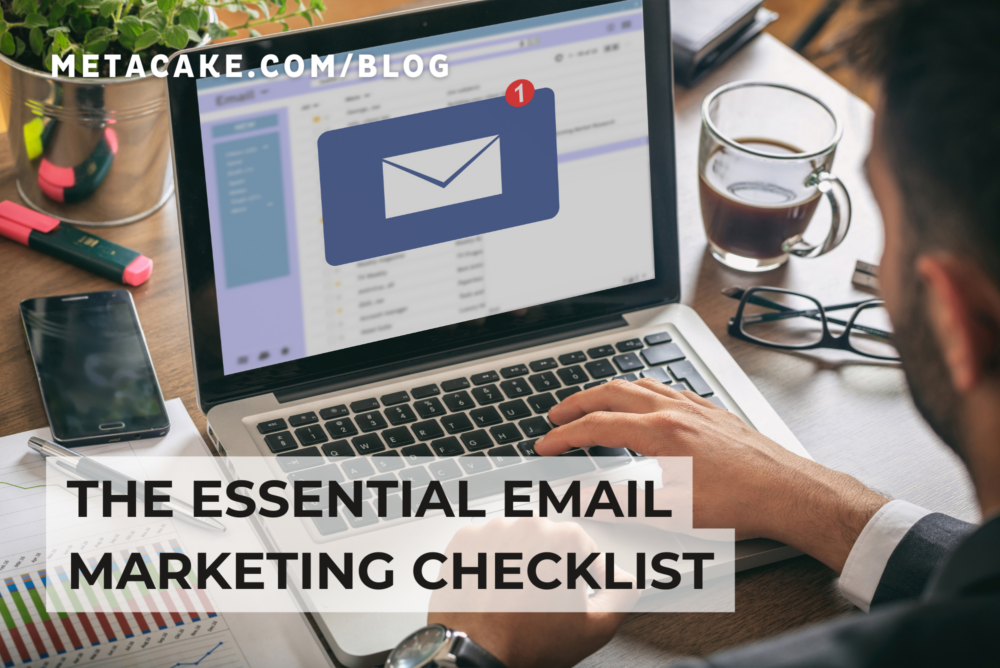
Understanding your email marketing efforts’ effectiveness is crucial for optimizing future campaigns. Analyzing key metrics provides valuable insights into what resonates with your audience and what needs improvement. This allows you to refine your strategies, maximize ROI, and ultimately achieve your marketing objectives.Effective email marketing hinges on a robust system for tracking and interpreting data. This involves not just knowing the metrics but also understanding how to interpret them within the context of your overall marketing strategy.
This allows for data-driven decisions, leading to more successful and targeted campaigns.
Key Metrics to Monitor
Tracking various metrics provides a comprehensive view of your email campaigns’ performance. A holistic approach considers factors like engagement, conversions, and deliverability. A well-defined framework for monitoring these metrics empowers you to refine your strategies and optimize campaign performance.
- Open Rate: This metric indicates the percentage of recipients who opened your email. High open rates suggest your subject lines are compelling and relevant to your audience. A low open rate could indicate a need for improvements in subject line writing or list segmentation.
- Click-Through Rate (CTR): This measures the percentage of recipients who clicked on a link within your email. High CTRs suggest your email content is engaging and compelling. Lower CTRs might point to issues with the content’s clarity, call-to-action, or the links’ destination.
- Conversion Rate: This metric tracks the percentage of recipients who completed a desired action, such as making a purchase or signing up for a webinar. A high conversion rate demonstrates the effectiveness of your email in driving desired outcomes. A low conversion rate might indicate the need for improvements in the call-to-action, landing page, or overall user experience.
- Bounce Rate: This refers to the percentage of emails that couldn’t be delivered to the recipient’s inbox. High bounce rates can stem from incorrect email addresses, full inboxes, or spam filters. Addressing these issues is vital for improving deliverability and avoiding wasted campaign efforts.
- Unsubscribe Rate: This measures the percentage of recipients who opted out of your email list. High unsubscribe rates might indicate that your content isn’t relevant or valuable to your subscribers, requiring changes in your content or communication strategies.
Interpreting Data from Email Marketing Platforms
Email marketing platforms provide comprehensive data dashboards for analyzing campaign performance. Understanding how to interpret these data visualizations is key to making informed decisions. Using this data allows for a deep understanding of subscriber behavior, allowing for better targeting and communication.
- Segmentation Analysis: Platforms allow you to segment your email list based on various criteria. Analyze the performance of emails sent to different segments to identify which groups respond best to specific types of content or offers. Segmenting your audience enables targeted messaging, maximizing the impact of your campaigns.
- A/B Testing Results: Platforms facilitate A/B testing different elements of your email campaigns, such as subject lines, email copy, or call-to-actions. Analyze the results of these tests to understand what variations perform best with your audience. This data-driven approach ensures your campaigns are optimized for maximum impact.
- Detailed Reporting: Many platforms offer detailed reports on various aspects of your email campaigns. Examine these reports to understand trends, identify areas for improvement, and track the effectiveness of your strategies. Analyzing these detailed reports provides crucial insights for future campaigns.
Analyzing Open Rates, Click-Through Rates, and Conversions
Analyzing these metrics allows you to understand what elements of your email campaigns are working and which need improvement. Understanding these factors allows for informed adjustments to maximize engagement and conversions.
- Open Rate Analysis: High open rates suggest your subject lines are engaging. Conversely, low open rates may necessitate revisiting your subject lines and targeting. Regularly analyzing open rates allows you to optimize for better audience engagement.
- Click-Through Rate Analysis: High CTRs often point to compelling content and effective calls-to-action. Conversely, low CTRs might indicate the need to adjust the content’s clarity, visual appeal, or calls-to-action. Regular monitoring helps you identify areas requiring adjustments.
- Conversion Analysis: High conversion rates demonstrate that your emails effectively drive desired actions. Low conversion rates may signal issues with the landing page or the call-to-action. Continuous analysis helps you refine your strategies to optimize conversions.
Using A/B Testing to Optimize Campaigns
A/B testing allows you to compare different versions of your emails to determine which performs better. A/B testing helps optimize your email campaigns, ensuring they are as effective as possible.
| Metric | Description | How to Measure |
|---|---|---|
| Open Rate | Percentage of recipients who opened the email. | Email marketing platform reports. |
| Click-Through Rate (CTR) | Percentage of recipients who clicked a link in the email. | Email marketing platform reports. |
| Conversion Rate | Percentage of recipients who completed a desired action (e.g., purchase). | Email marketing platform reports, CRM data. |
| Bounce Rate | Percentage of emails that couldn’t be delivered. | Email marketing platform reports. |
| Unsubscribe Rate | Percentage of recipients who unsubscribed from the list. | Email marketing platform reports. |
Legal and Ethical Considerations
Email marketing, while powerful, comes with responsibilities. Understanding and adhering to legal and ethical guidelines is crucial for building trust with subscribers and avoiding penalties. This section delves into the essential legal requirements, best practices, and considerations surrounding data privacy and compliance.Building a successful email marketing strategy requires navigating a complex landscape of regulations and best practices. Ignoring these guidelines can lead to significant issues, from reputational damage to hefty fines.
This section Artikels the key aspects to ensure your email campaigns are not only effective but also legally sound and ethically responsible.
Legal Requirements for Email Marketing
Email marketing is governed by regulations like the CAN-SPAM Act in the US. Adherence to these regulations is critical for maintaining a healthy sender reputation and avoiding legal repercussions.
- The CAN-SPAM Act (Controlling the Assault of Non-Solicited Pornography and Marketing Act) mandates that commercial emails must include clear and accurate information about the sender, an unsubscribe mechanism, and a physical postal address.
- The act prohibits deceptive practices, such as using misleading subject lines or hiding the commercial nature of the email. Furthermore, it requires emails to clearly indicate that the message is an advertisement or solicitation.
Best Practices for Respecting Subscriber Preferences
Subscriber preferences should be prioritized. Providing clear unsubscribe options and respecting opt-out requests are crucial for maintaining a positive relationship with your audience.
- Offer a prominent and easily accessible unsubscribe link in every email. The unsubscribe process should be straightforward and immediate.
- Honor unsubscribe requests promptly. Failure to do so can lead to complaints and damage your sender reputation.
- Provide multiple ways to manage preferences, including options to modify subscription types or communication frequency.
Data Privacy and Security in Email Marketing
Protecting subscriber data is paramount. Implementing robust security measures and adhering to privacy regulations are vital for building trust and avoiding breaches.
- Use industry-standard encryption methods to protect sensitive data during transmission and storage.
- Comply with data privacy regulations, such as GDPR in Europe and CCPA in California, which dictate how personal data should be handled.
- Implement security protocols to prevent unauthorized access to subscriber data. Regular security audits are crucial to identify and address vulnerabilities.
Explicit Consent for Email Marketing
Obtaining explicit consent before sending emails is essential for legal compliance and building trust.
- Obtain explicit consent from each subscriber to add them to your email list. This often involves a clear opt-in process during the signup process.
- Provide clear and concise information about how you will use their data in your privacy policy.
- Ensure the opt-in process is prominent and easily understood.
Compliance Regulations for Different Regions
Different regions have specific regulations governing email marketing. Understanding these regulations is crucial for global email marketing strategies.
- The GDPR (General Data Protection Regulation) in the European Union imposes stringent requirements for data processing and consent, requiring explicit consent and the right to access, rectify, and erase data.
- The CCPA (California Consumer Privacy Act) in California grants California residents specific rights regarding their personal information, including the right to know what data is collected, the right to delete it, and the right to opt out of the sale of their personal information.
- Different countries have similar legislation; it’s essential to research and understand the specific regulations for each region where you intend to market.
Integrating Email Marketing with Other Channels
Email marketing isn’t a siloed activity; it thrives when integrated with other marketing channels. A cohesive strategy that combines email with social media, website interactions, and other online touchpoints creates a powerful, multi-faceted approach to customer engagement. This integration strengthens brand recognition, nurtures leads, and ultimately drives conversions.Effective email marketing often relies on a comprehensive marketing mix. By coordinating email campaigns with other channels, businesses can leverage the strengths of each to achieve a synergistic effect.
This interconnected approach allows for targeted messaging across various platforms, creating a unified customer experience that reinforces brand identity and fosters lasting customer relationships.
Email Marketing and Social Media Integration
Social media platforms provide a valuable avenue for driving traffic to email signup forms and nurturing leads. Sharing compelling content on social media, including links to valuable resources, blog posts, or special offers, encourages engagement and promotes sign-ups. Running contests or giveaways on social media platforms can be an effective way to collect email addresses. Engaging with customers on social media allows for personalized content recommendations, further encouraging them to subscribe.
Remember, consistency in brand voice and message across platforms is critical.
Email Marketing and Website/Landing Page Integration
A well-integrated email marketing strategy should seamlessly connect with a website and its landing pages. Websites can act as hubs for driving email sign-ups, with strategically placed signup forms on key pages. Landing pages, designed specifically for a campaign, should clearly communicate value propositions and include a prominent call-to-action (CTA) to subscribe. Website analytics, when integrated with email marketing platforms, can provide valuable insights into user behavior, informing future email content and segmentation strategies.
Use these insights to tailor email content to specific interests and needs, improving open and click-through rates.
Email Marketing in a Multi-Channel Approach
Email marketing can effectively support a multi-channel approach to marketing by nurturing leads across different touchpoints. This strategy allows for a personalized and consistent brand experience. By sending targeted emails based on website interactions, for example, a user who views a product page but doesn’t purchase could receive a follow-up email reminding them of their interest. The key is to use data to tailor messaging, leading to increased engagement and conversion rates.
A unified brand experience strengthens brand recognition and trust, making it more likely for customers to engage with future communications.
Table: Email Marketing Integration with Other Channels, Email list marketing explained
| Channel | Integration Strategy | Example |
|---|---|---|
| Social Media | Share compelling content, run contests, and utilize targeted ads to drive traffic to email signup forms. | A clothing brand posts an exclusive discount code on Instagram for followers who sign up for their email list. |
| Website/Landing Pages | Strategically place email signup forms on key pages and create dedicated landing pages for specific campaigns. | A SaaS company features a signup form prominently on their pricing page to capture leads interested in their services. |
| Online Advertising | Use targeted advertising campaigns to reach specific audiences and drive traffic to landing pages for sign-ups. | A travel agency uses retargeting ads on social media to re-engage users who have previously visited their website but didn’t book a trip. |
| Customer Support | Send welcome emails with important information about the company’s customer support policies. | A tech company sends an email with troubleshooting tips and FAQs to new customers. |
Summary
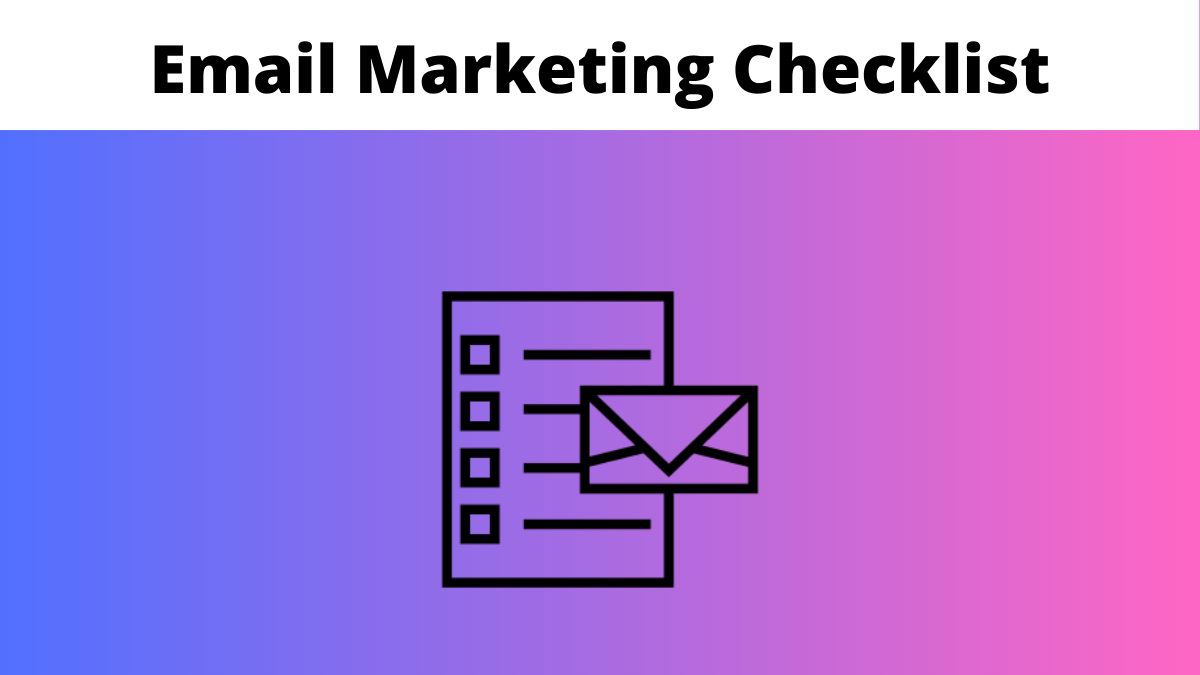
In conclusion, email list marketing explained is a powerful tool for businesses of all sizes. By understanding the fundamentals, building a strong email list, crafting engaging content, automating processes, measuring results, and adhering to legal guidelines, you can cultivate a successful email marketing strategy that drives business growth and strengthens customer relationships. From setting up effective opt-in forms to utilizing automation for targeted campaigns, this comprehensive guide equips you with the knowledge and tools to build a truly effective email marketing strategy.
